Product
Stearic Acid Price Trend and Forecast
Stearic Acid Price Trend and Forecast
Stearic Acid Regional Price Overview
Get the latest insights on price movement and trend analysis of Stearic Acid in different regions across the world (Asia, Europe, North America, Latin America, and the Middle East & Africa).
Stearic Acid Price Trend for Q1 of 2025
Asia
In Q1’25, Stearic Acid prices in Asia, particularly Southeast Asia, showed a clear upward trajectory. After a bearish period in late 2024, prices rebounded in early February, driven by rising feedstock palm oil costs. Malaysia's palm oil production declined significantly due to floods and rain, which directly impacted Stearic Acid production.
Stearic Acid Price Chart
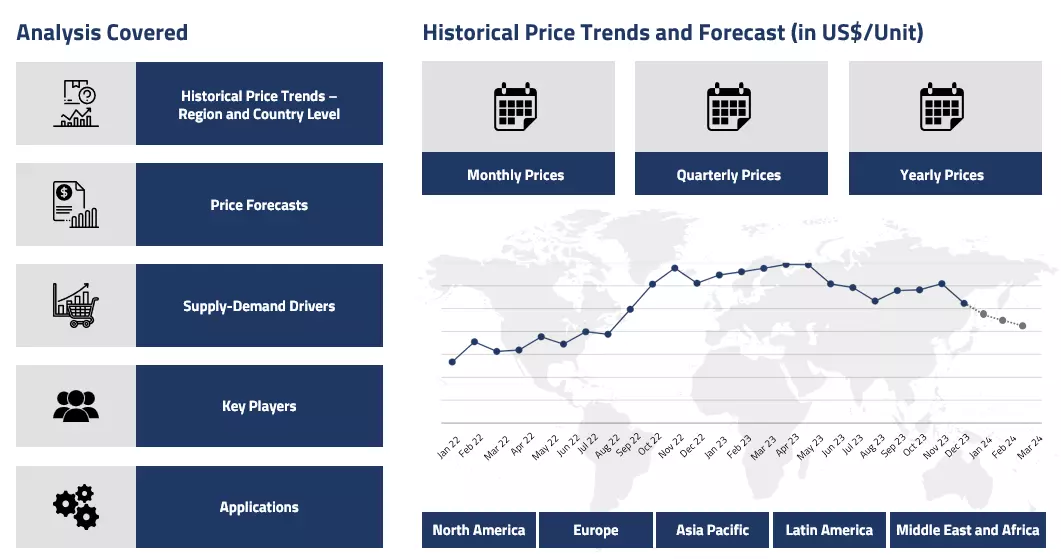
Please Login or Subscribe to Access the Stearic Acid Price Chart Data
This supply constraint, coupled with increased demands ahead of Ramadan, pushed prices higher despite some potential relief from Indonesia's lowered crude palm oil reference price in February. The market tightness was further exacerbated by reduced exports of palm oil products from Malaysia compared to December.
Europe
The European Stearic Acid market remained relatively stable through early Q1 but gradually firmed as the quarter progressed. Despite subdued demand conditions, with automotive sales down in January, prices began to climb due to supply constraints. The EU Deforestation Law created additional complications for Southeast Asian suppliers, limiting Stearic Acid circulation in the European market. This regulatory pressure, combined with logistical challenges including congestions at Northwest European ports, created a tight supply environment that supported price increases despite weaker demand fundamentals from downstream industries.
North America
North American Stearic Acid prices held steady in early February before climbing moderately throughout Q1. Demand from downstream sectors was initially moderate to low, with January vehicle sales dropping month-on-month due to post-holiday sluggishness and extreme weather conditions. However, limited inventories entering the market and the ripple effects of Asian production constraints eventually outweighed the demand weakness. The winter tire industry provided some support with seasonal inquiries, but overall, the price increases were primarily supply-driven rather than demand-pulled.
Analyst Insight
According to Procurement Resource, Stearic Acid prices are expected to ease after Q1 as palm oil production is forecasted to increase significantly post-Ramadan. This increase in feedstock availability, coupled with palm oil becoming more competitive against alternative oils, suggested a potential softening of Stearic Acid prices in the coming months, especially in the second half of 2025.
Stearic Acid Price Trend for Q4 of 2024
Asia
In Q4’24, the Asian Stearic Acid market experienced significant upward momentum, primarily driven by tight palm oil supplies from major producers in Southeast Asia. The quarter was marked by production constraints in key markets like Malaysia and Indonesia, where palm oil availability remained limited due to weather-related disruptions and increased domestic consumption for biodiesel programs.
Supply chain challenges and elevated freight costs further contributed to the price increases across the region. While demand from the rubber industry showed mixed trends, the overall tight supply situation kept prices elevated throughout the quarter. Japanese and South Korean markets particularly felt the impact of these supply constraints, leading to higher import costs.
Europe
The European Stearic Acid market witnessed notable price increases during Q4’24, influenced by the rising production costs and limited availability of palm oil feedstock. The market faced pressure from elevated freight rates and logistical challenges at major ports, which contributed to longer lead times and higher operational costs. Demand remained relatively subdued, particularly from the automotive sector, which continued to show signs of weakness in several key markets.
Despite the muted demand, suppliers maintained firm pricing positions due to high production costs and limited inventory availability. The market saw some relief towards the end of December, with a slight easing in prices as suppliers focused on year-end stock movements.
North America
North American Stearic Acid prices followed an upward trajectory throughout Q4’24, with the market experiencing sustained pressure from higher raw material costs and logistics challenges. The quarter was particularly impacted by port disruptions, which affected the timely delivery of imports.
The Mexican automotive sector provided some support to demand, while the overall market remained constrained by supply-side factors. Rising palm oil costs from Southeast Asian suppliers and increased freight rates were key factors driving the price trends. The market saw steady buying patterns despite the elevated price levels, particularly from essential industries maintaining regular consumption.
Analyst Insight
According to Procurement Resource, Stearic Acid prices are expected to remain firm globally, supported by ongoing palm oil supply constraints and sustained production costs. The market will likely continue to face pressure from logistical challenges and high freight rates, while demand patterns will play a crucial role in determining price movements.
Stearic Acid Price Trend for Q3 of 2024
Asia
The Asian market for stearic acid demonstrated volatility in the third quarter of 2024.Drawing from edible oil market dynamics, the region experienced significant price fluctuations driven by multiple factors.
The market initially surged with strong buying interest, followed by a complex pricing pattern. Favourable agricultural conditions, particularly in India, led to bumper harvests that impacted overall market dynamics. The government's decision to increase import duties on edible oils by 20 percentage points created ripple effects across related chemical markets. This policy intervention caused shifts in consumer behaviour, with market participants adapting to new pricing structures. Towards the quarter's end, the market saw a steady price incline, influenced by seasonal demands and strategic market repositioning.
Europe
The European stearic acid market reflected the intricate pricing trends observed in regional edible oil sectors. Market dynamics were characterized by seasonal demand and significant logistical challenges. European buyers demonstrated cautious purchasing behaviours, initially waiting for potential price stabilizations. Supply constraints from key production regions, coupled with export-related challenges, drove price movements. The market experienced periodic price fluctuations, with buyers ultimately compelled to purchase at increased prices due to limited alternative sourcing options.
North America
The North American stearic acid market mirrored the broader chemical and oil market trends. After initial price slowdowns linked to reduced downstream demand, the market experienced a notable rebound. Consumer interest gradually increased, aligning with global market dynamics. Market participants navigated complex challenges, including geopolitical tensions and logistics-related hurdles. The region witnessed a nuanced pricing strategy, with manufacturers and distributors adapting to changing market conditions and consumer preferences.
Analyst Insight
According to Procurement Resource, the Stearic Acid market will continue to remain volatile in the coming months. Supply constraints and government policy interventions are expected to maintain upward pricing pressures, creating a dynamic and challenging market environment.
Stearic Acid Price Trend for Q2 of 2024
Asia
During Q2'24, the price trend of stearic acid was heavily influenced by the changing dynamics of palm oil as it serves as a major feedstock of the commodity. Despite severe weather conditions from El Nino, Malaysian CPO production increased significantly, supported by improved labor availability and lower fertilizer costs. This rise in production led to a slight decline in CPO prices towards the end of the quarter, impacting the stearic acid market.
In China, CPO imports surged, particularly in late Q2, as global prices dropped, supporting trader margins and consumer sector confidence. Conversely, Indian CPO prices also saw a reduction due to decreased procurement and increased competition from other vegetable oils. The overall effect was a stabilization of stearic acid prices within a narrow range, reflecting the dynamics of CPO availability and competitive pressures from alternative commodities.
Europe
In Europe, the stearic acid market mirrored some of the challenges faced in the US, with rising ocean freight rates significantly impacting prices. The fluctuating cost of palm oil, obtained mainly from Southeast Asia, also contributed to price volatility. In May, Malaysia saw an increase in palm oil stocks due to a rise in crude palm oil production during the peak harvest season, which helped lower production costs for stearic acid. However, this potential cost benefit was counterbalanced by the high freight charges, affecting the overall pricing dynamics.
Indonesia's palm oil exports decreased in May, adding further complexity to the supply chain and production cost for stearic acid. The European market also faced disruptions due to increased shipping costs and logistical challenges, which intensified price pressures. Similar to the US, the demand from the rubber industry in Europe remained weak, negatively hampered by a decline in EV sales. The European Union also reported a significant drop in new battery-electric car sales in May, with Germany experiencing a notable decline due to subsidy cuts. This downturn in the automotive sector, a key consumer of stearic acid, further depreciated demand conditions.
North America
In the second quarter of 2024, stearic acid prices in the US experienced an upward trend primarily driven by disruptions in ocean freight rates and fluctuating palm oil prices. Throughout May and June, the market saw significant volatility in palm oil prices, which decreased notably in May but remained uncertain for the rest of the quarter, contributing to unpredictable production costs for stearic acid.
The US market was further impacted by ongoing congestion at key Asian trade routes leading to substantial increases in freight charges. This rise in logistics costs played a crucial role in the rising prices of stearic acid despite the weak demand from the downstream rubber industry, influenced by stagnant electric vehicle sales. In the US, EV and hybrid vehicle sales declined, contributing to a subdued demand for stearic acid from the automotive sector.
Analyst Insight
According to Procurement Resource, the price trend of Stearic Acid is expected to improve, although marginally in the upcoming quarters, influenced by the increase in sales volumes of downstream industries.
Stearic Acid Price Trend for Q1 of 2024
| Product | Category | Region | Price | Time Period |
| Stearic Acid | Chemicals | Asia | 1175 USD/MT | March 2024 |
Stay updated with the latest Stearic Acid prices, historical data, and tailored regional analysis
Asia
Stearic acid price trajectory in the Asian market turned out to be oscillating throughout the said period of Q1’24. The market had been riddled with various uncertainties at different levels. Stearic acid is one of the most commonly used long-chain fatty acids and is a valuable ingredient in soap-making due to its versatility and beneficial properties. During the said quarter the variations in stearic acid price trend were strictly correlated with the fluctuations in the price trend of these feedstock materials.
The beginning of the quarter was humbling as the markets, particularly Asian markets, traded low. However, situations started to change mid-quarter as the prices started inclining upwards. Asia accounts for the largest production of palm, coconut, and other oils; with changes in production levels and import volumes, the prices were impacted. Further, the difficult trade situation aided the rigorous fluctuations in the market.
Europe
The European stearic acid market was more consolidated during the first quarter of 2024. Lackluster downstream demands played a role in limiting the market growth in the said region. Although there were various factors that motivated the European market in a positive direction, an astounding rise in the upstream costs was one of the biggest appreciating market drivers.
Initially, the market situation was balanced as the supply and demand dynamics were more stable. However, with the steady incline in feedstock prices in Asia, procuring them became a challenge. Shipping costs surged drastically within the said duration. Further, the rise in energy and crude oil prices also pushed the manufacturing costs. Overall, a wavering price trend was witnessed in Q1’24.
North America
The behavior of the American stearic acid market was not much different from its Asian and European counterparts. The market curve was quite relaxed at the onset of said quarter. Inventories were still able to support the incoming consumer demands. As days progressed and product movement grew, the prices increased a little for stearic acid. With two open war fronts in Europe and the Middle East, navigating global trade became a challenge, especially for US authorities. Conclusively, a mixed market trajectory was experienced during the said duration.
Analyst Insight
According to Procurement Resource, Stearic Acid price trends are expected to remain afloat in the coming quarter. The market drivers look quite optimistic about the supply and demand situation of the coming days.
Stearic Acid Price Trend for the October - December of 2023
Asia
Stearic acid is a long-chain saturated fatty acid that is generally produced by the hydrolysis of triglycerides that are derived from organic fat sources like tallow, vegetable oils like sunflower oil, palm oil, etc. Hence, the price trend for stearic acid are largely dependent on the market patterns of its feedstock oils. During the said period of Q4’23, the market behavior of stearic acid registered highly oscillating trajectories.
The market inclination was mostly positive during the entire period; however, the second half was a little more affirmative than the former half, as the winter months called for a higher stearic acid demand from the lubricant, cosmetic, and detergent industries. The feedstock prices are also inclined by the last month of the year. Overall, swift variations in the stearic acid price trend were witnessed during the said period.
Europe
The European market trend for stearic acid were largely in alliance with the Asian market during the final quarter of the year 2023. The feedstock supply curtailments because of supply chain disruptions caused by the geopolitical tensions in the region heavily affected the market dynamics. Hence, fluctuating patterns were witnessed for stearic acid during this time.
North America
The American stearic acid price trend were no different from its Asian and European counterparts. The prices here were observed to vary within narrow ranges, given the uncertain demands and consumer behavior amid rising inflation and disruptive market logistics.
Analyst Insight
According to Procurement Resource, Stearic Acid price trend are likely to follow a similar trajectory in the coming months as well. The supply and demand gap is expected to reduce further in the coming quarters, which will positively impact the market sentiments.
Stearic Acid Price Trend for the July - September of 2023
Asia
The decline in the stearic acid prices during the third quarter was steep as the Asian countries struggled to maintain their procurement rates of stearic acid. The market for stearic acid failed to rise even after a significant improvement in the cost of raw materials and natural gas. In the trend of the market dynamics, it was indicated that the downstream automotive industries faced a significant fall in their sales number that had a negative effect on the market activities of stearic acid and its price graph trajectory.
Europe
In the first half of the third quarter, the stearic acid prices inclined as the after effect of bullish downstream demand. However, soon the declined demand from the construction and PVC industries hampered the stearic acid prices in the second half of the quarter. In addition to this, the purchasing activities of the consumers were adversely affected by the persistent effects of inflation and the ill effects of recession in European countries.
North America
The North American stearic acid market witnessed a stable gain in the stearic acid price trend, especially on account of rising cost of feedstock materials and marginal improvement in the automotive industries. In addition to this, the demand from the polymer sector appreciated with the rise in their procurement rates as the consumers expanded their spending budget with some relief in the economic crises. Additionally, the exponential rise in the prices of palm oil and the rise in transportation charges also yielded positive results in terms of stearic acid prices.
Analyst Insight
According to Procurement Resource, the price trend of Stearic Acid are estimated to follow an inclining trajectory as the demand from the automotive and PVC sectors seems to be improving.
Procurement Resource provides latest prices of Stearic Acid. Each price database is tied to a user-friendly graphing tool dating back to 2014, which provides a range of functionalities: configuration of price series over user defined time period; comparison of product movements across countries; customisation of price currencies and unit; extraction of price data as excel files to be used offline.
About Stearic Acid
Stearic Acid is a well-known saturated long-chain fatty acid with an 18-carbon backbone. Stearic Acid is found in different animal and plant fats and is a major component of cocoa butter and shea butter. In appearance, Stearic Acid is a white solid with a mild odour.
Stearic Acid Product Details
| Report Features | Details |
| Product Name | Stearic Acid |
| Industrial Uses | Adhesives and sealant chemicals, Adsorbents and absorbents, Agricultural chemicals (non-pesticidal), Anti-adhesive agents, Corrosion inhibitors and anti-scaling agents, Curing activator and polymer, Defoamer manufacture, Fillers, Finishing agents, Fuels and fuel additives, Ingredient in rubber compound, Intermediates, Lubricants and lubricant additives, Paint additives and coating additives , Pigments, Plasticisers, Plating agents and surface treating agents, Rubber component, Sizing agent used to impart hydrophobicity to paper product |
| Chemical Formula | C18H36O2 |
| Synonyms | Fatty Acid C18, Octadecanoic Acid, Octadecanoic Acid, n-Octadecanoic acid |
| Molecular Weight | 284.5 g/mol |
| Supplier Database | Eastman Chemical Company, BASF SE, Oleon NV, Pacific Oleochemicals Sdn Bhd, Colgate-Palmolive Company, Longyan Zhuoyue New Energy Co. Ltd. |
| Region/Countries Covered | Asia Pacific: China, India, Indonesia, Pakistan, Bangladesh, Japan, Philippines, Vietnam, Iran, Thailand, South Korea, Iraq, Saudi Arabia, Malaysia, Nepal, Taiwan, Sri Lanka, UAE, Israel, Hongkong, Singapore, Oman, Kuwait, Qatar, Australia, and New Zealand Europe: Germany, France, United Kingdom, Italy, Spain, Russia, Turkey, Netherlands, Poland, Sweden, Belgium, Austria, Ireland Switzerland, Norway, Denmark, Romania, Finland, Czech Republic, Portugal and Greece North America: United States and Canada Latin America: Brazil, Mexico, Argentina, Columbia, Chile, Ecuador, and Peru Africa: South Africa, Nigeria, Egypt, Algeria, Morocco |
| Currency | US$ (Data can also be provided in local currency) |
| Supplier Database Availability | Yes |
| Customization Scope | The report can be customized as per the requirements of the customer |
| Post-Sale Analyst Support | 360-degree analyst support after report delivery |
Note: Our supplier search experts can assist your procurement teams in compiling and validating a list of suppliers indicating they have products, services, and capabilities that meet your company's needs.
Stearic Acid Production Processes
- Production of Fatty Acid- C18 from Oil or Fat via Hydrolytic or Lipolytic Splitting
In general, the production process of Fatty Acid involves hydrolytic or lipolytic splitting (reaction with water using high pressure and temperature or enzymes) of any oil or fat to finally obtain Fatty Acid as the product.
Methodology
The displayed pricing data is derived through weighted average purchase price, including contract and spot transactions at the specified locations unless otherwise stated. The information provided comes from the compilation and processing of commercial data officially reported for each nation (i.e. government agencies, external trade bodies, and industry publications).
Assistance from Experts
Procurement Resource is a one-stop solution for businesses aiming at the best industry insights and market evaluation in the arena of procurement. Our team of market leaders covers all the facets of procurement strategies with its holistic industry reports, extensive production cost and pre-feasibility insights, and price trends dynamics impacting the cost trajectories of the plethora of products encompassing various industries. With the best analysis of the market trends and comprehensive consulting in light of the best strategic footstep, Procurement Resource got all that it takes.
Client's Satisfaction
Procurement Resource has made a mark for itself in terms of its rigorous assistance to its clientele. Our experienced panel of experts leave no stone unturned in ensuring the expertise at every step of our clients' strategic procurement journey. Our prompt assistance, prudential analysis, and pragmatic tactics considering the best procurement move for industries are all that sets us apart. We at Procurement Resource value our clients, which our clients vouch for.
Assured Quality
Expertise, judiciousness, and expedience are the crucial aspects of our modus operandi at Procurement Resource. Quality is non-negotiable, and we don't compromise on that. Our best-in-class solutions, elaborative consulting substantiated by exhaustive evaluation, and fool-proof reports have led us to come this far, making us the ‘numero uno' in the domain of procurement. Be it exclusive qualitative research or assiduous quantitative research methodologies, our high quality of work is what our clients swear by.
Table Of Contents
Our Clients
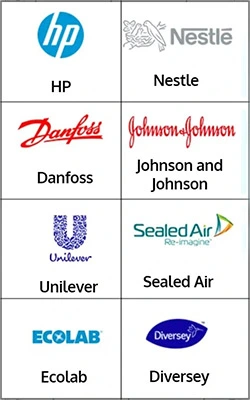
Get in Touch With Us
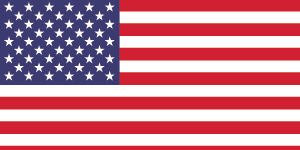
UNITED STATES
Phone:+1 307 363 1045
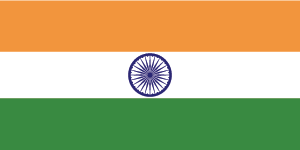
INDIA
Phone: +91 8850629517
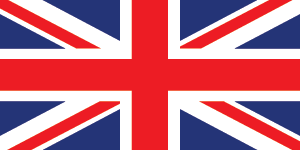
UNITED KINGDOM
Phone: +44 7537 171117
Email: sales@procurementresource.com

